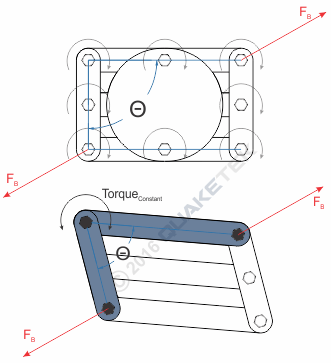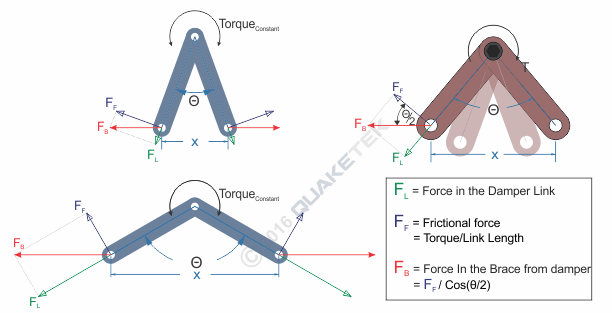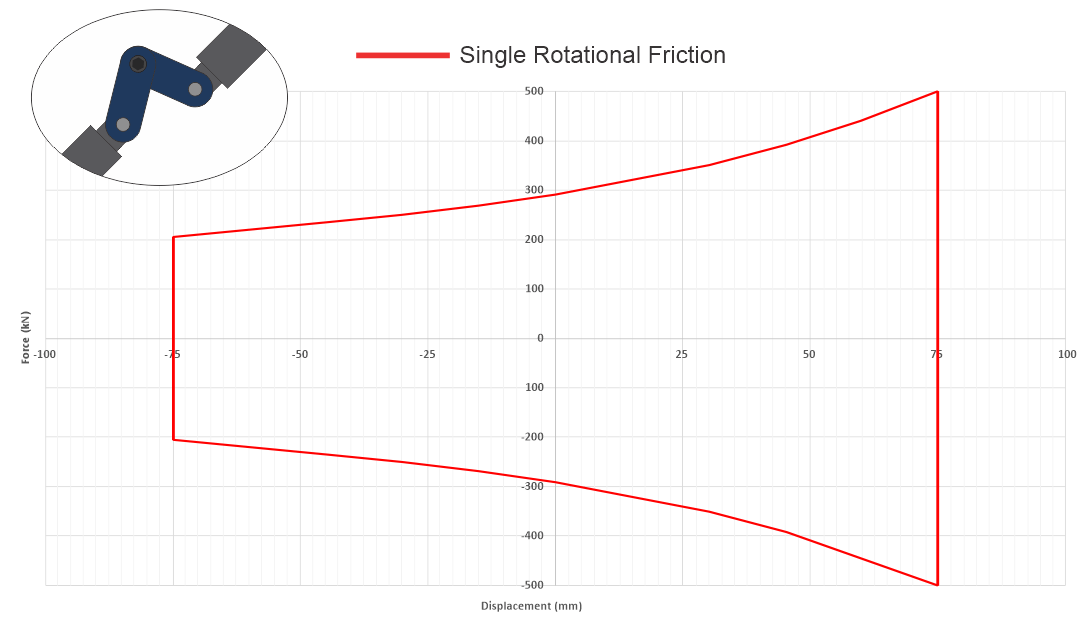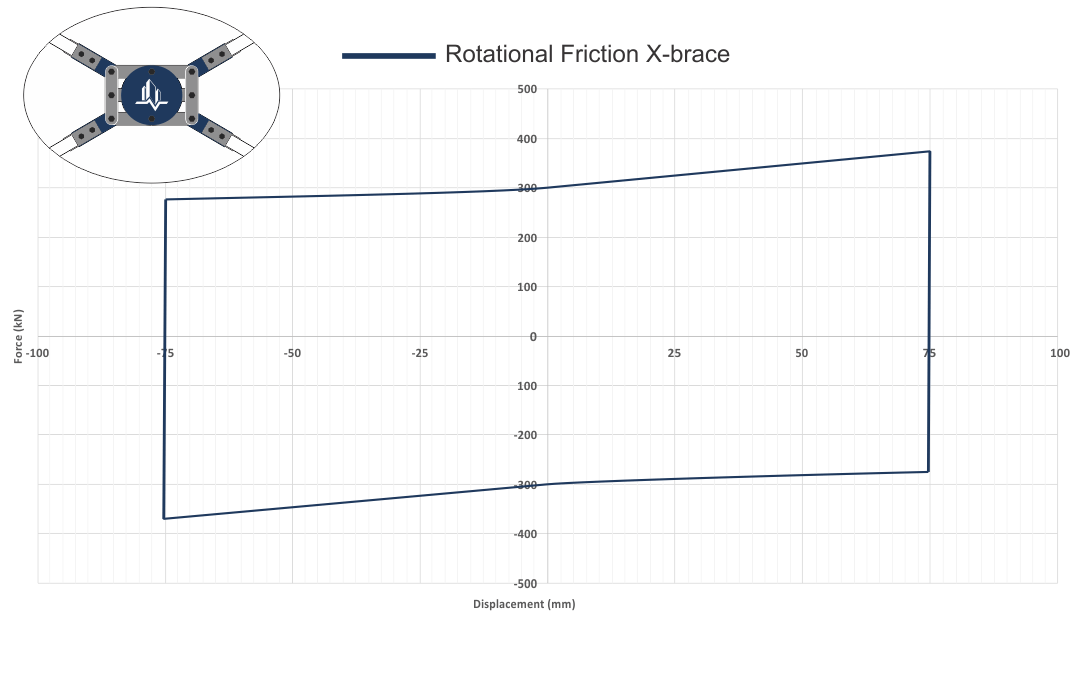Quaketek X-Brace Rotational Friction Damper
Rotational friction dampers for use in seismic force resisting systems, specifically tension bracing has been used for more than 30years. The technology has proved useful and economical in a number of applications and most applications are in long braced spans such as those found in industrial buildings (e.g. Boeing Assembly plant) or in water towers (e.g. Beaux Arts Washington).
This Quaketek X-brace Rotational Friction Damper also incorporates some elements of sliding friction about the center which helps to “even” out the hysteresis loop and improve the efficiency of the overall damper.


What is a Rotational Friction Damper?
A Rotational Friction Damper dissipates seismic energy by friction generated through a rotating friction joint. The force in the connected braces is dependent on the angle to overcome the force in the joint. The component of the response force in the brace, normal to the link multiplied by the length of the link must be equal or greater than the constant torque to work. This type of damper can be modeled with a rectangular hysteretic loop for small displacements (changes in angle between the damper links).

Rotational Friction Dampers have been used since the early 1900s in vehicle suspensions and represent a robust technology for use in seismic force resisting systems for structures. Although this is a well proven technology there is more variation in the force due to changes in angle as well as variance in individual dampers due to manufacturing tolerances, it therefore remains important to conduct 100% testing of the rotational friction dampers before use in seismic applications.
Hysteresis Loop & Modelling
For small building drifts, a rotational friction damper can be assumed to have a rectangular hysteretic loop which make analysis and design simple and straightforward. For larger drifts (rotations in the damper links) more over strength in the connections will be needed and the hysteretic loop should be explicitly modelled as trapezoidal in a non linear analysis. This effect is illustrated in the characteristic trapezoidal loop (bottom left) of a single rotational friction damper or the parallelogram shaped loop (bottom right) of the x-brace rotational damper. Depending on the aspect ratio and requirements of the specific frame the variations can be reduced. In cases where the force variations must be minimized (e.g. most retrofits) please see our inline friction damper.


